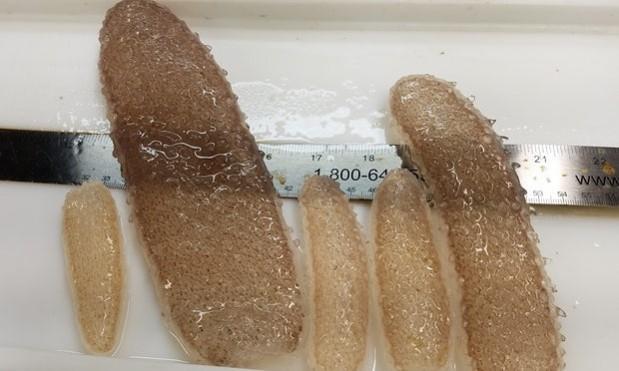
Mysterious pickle-shaped creatures lately crowded the West Coast of the United States in Oregon. The sudden spurting of these jelly-like alien creatures in the water in millions has also left people baffled.
Numerous beach-goers were now worried about the sea creatures taking over the waters and complained about them to scientists.
Touching these creatures was found to be harmless, they were rubbery in touch and had bumps all over their body, said oceanographer Richard Brodeur of the Northwest Fisheries Science Center.
He even stated that initially even he didn't know what that mysterious creature was. It was later found that those translucent pickle-like creatures are called pyrosomes, also known as the 'unicorn of the sea'.

"Pyrosomes are made up of small, multicellular organisms, linked together in a tunic to form a colony shaped like a tube. They are filter feeders and use tiny, hair-like projections to draw plankton into their mucous filter. The ones seen off Oregon ranged in size from about an inch to more than 2 feet long," a statement by the University of Oregon revealed.
These asexual, rare marine creatures are usually found in far offshore in the tropics, it remains an unsolved mystery what made millions of them swarm in millions in the waters of Oregon.
A five-minute mid-water tow of a research net was carried out in the Columbia River in late May and a shocking approximately 60,000 pyrosomes were found in the water, which left the researchers shocked and baffled.

According to a theory formulated by a UO graduate student Hilarie Sorensen, these creatures migrated northward due to warmer ocean conditions over the last three years.
Another hypothesis she came up with is that they are usually much further offshore but are being delivered by currents to more coastal waters.
"We have a lot of questions and not many answers," said Brodeur of the Northwest Fisheries Science Center.
"We're trying to collect as much information as we can to try to understand what is happening, and why," he added.
Too many of these creatures are likely to consume a lot of oxygen from the water, which would cause threat for other sea organisms as well as the fisheries.
These creatures are said to be eaten by some bony fish, dolphins and whales but the researchers are yet to dig out a lot about their importance in the food chain and ecosystem.














